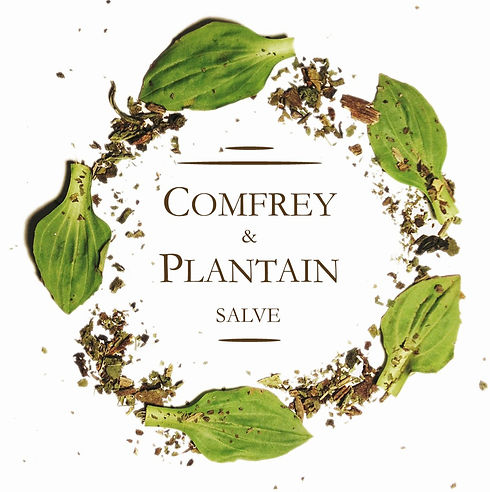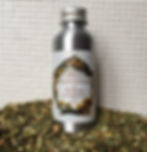
HANDMADE NATURAL PRODUCTS
Body Care from Nature
Chamomile & Calendula Salve
Soothes Babies Bottoms
Dry, Cracked, Tender Nipples
Dry, Red Skin Patches & Creases
Perineal Massage
Meadowsweet & Willow Oil
Ideal for a Soothing Massage after Hours of Sitting & Feeding.
Pilewort Salve
As the name insinuates, this is a very astringent plant which tones up loose tissue, puts things back where they are supposed to be & soothes irritation.
Makes Bums more Comfortable!
Elderflower & Lime Flower Beauty Balm
Something every Mum deserves just to make her feel wonderful!
The gentlest touch for naturally glowing skin
Comfrey & Plantain Salve
Supports Skin’s Natural Recovery Process
Ideal for skin after bumps, knocks or strain
Chamomile & Calendula Bath Oil
Gently cares for baby’s delicate skin from head to toe.
Nurtures and softens sensitive skin all over
Find Your Perfect Product
Some light reading about Herbal Medicine




Best Seller

Elderflower & Lime Flower
Handfuls of flowers, infused into gentle botanical oils chosen specifically to nourish more mature skin & maintain the beauty of youth.
Traditional Uses of Elderflower & Linden
(For educational purposes only. Not intended as a claim for any cosmetic product)
Elderflower (Sambucus nigra flos)
Traditionally used topically to soften, tone, and brighten the skin, especially in dull, dry, or reactive complexions. Its mild astringency and anti-inflammatory properties made it popular in skin washes and lotions for puffiness, sun exposure, or irritation. Internally, elderflower has been used to support the respiratory system and reduce fever during colds and flu.
Linden or Lime Flower (Tilia spp.)
A gentle skin soother, linden is traditionally applied in compresses or baths to calm sensitive, red, or irritated skin, particularly where tension or dryness is present. Its demulcent and anti-spasmodic properties are also used internally to ease stress, support restful sleep, and reduce nervous system reactivity.
Chamomile & Calendula
The combination of Chamomile and Calendula is a time-honored pairing in natural skincare, especially for sensitive, inflamed, or reactive skin. Together, they offer gentle yet effective support for healing and skin barrier health.
Traditional Uses of Chamomile & Calendula
(For educational purposes only. Not intended as a claim for any cosmetic product)
Chamomile (Matricaria chamomilla)
Traditionally used as a gentle anti-inflammatory and calming herb, both internally and topically. Chamomile is valued for easing skin irritation, soothing redness, and supporting the repair of minor wounds, rashes, and inflamed tissues.
Calendula (Calendula officinalis)
A key herb in Western herbalism for skin healing. Traditionally applied to cuts, grazes, burns, and slow-healing wounds. Its antiseptic, anti-inflammatory, and vulnerary properties make it a staple in salves and creams for promoting tissue regeneration and reducing irritation


Meadowsweet & Willow
Traditional Uses of Meadowsweet & Willow
(For educational purposes only. Not intended as a claim for any cosmetic product)
Meadowsweet (Filipendula ulmaria)
A classic anti-inflammatory herb in Western herbal medicine, traditionally used to relieve joint and muscle discomfort, reduce systemic inflammation, and support digestive health. Rich in salicylates, it was historically used much like modern non-steroidal anti-inflammatory drugs. Can also soothe acid stomach as tea.
White Willow (Salix alba)
Known as the original source of salicin, the forerunner to aspirin. Willow bark and leaves have been used for centuries to ease pain, reduce fever, and calm inflammation in musculoskeletal conditions such as arthritis, strains, and rheumatic complaints.
Comfrey & Plantain
Traditional Uses of Comfrey & Plantain
(For educational purposes only. Not intended as a claim for any cosmetic product)
Comfrey (Symphytum officinale)
Traditionally known as "knitbone," comfrey has been used to support the repair of bruises, sprains, fractures, and damaged tissues. Also known to help speed wound repair & to keep scar tissue soft. Rich in allantoin, it’s valued for promoting cell regeneration and soothing inflammation in muscles, joints, and skin.
Plantain (Plantago major)
A widely used first-aid plant in Western herbalism. Traditionally applied to draw out irritation from bites, stings, and splinters. Known for its soothing, astringent, and wound-cleansing properties, plantain supports tissue repair and reduces surface inflammation.


Pilewort or Lesser Celandine
Traditional Uses of Pilewort (Ranunculus ficaria)
(For educational purposes only. Not intended as a claim for any cosmetic product)
Pilewort, also known as Lesser Celandine, has a long history of traditional use for external applications to haemorrhoids (piles) ~ hence the name. Herbalists valued its astringent, soothing, and toning effects on swollen or congested tissues, particularly in the lower rectal area. It was often used in ointments or infused oils applied to the affected skin.
While it was traditionally applied topically, care was always taken due to the plant’s fresh sap being potentially irritating. Herbalists typically used dried or properly prepared forms to reduce this risk.
Internally, pilewort was rarely used due to its potential toxicity and acrid constituents. Its use was primarily topical and practitioner-guided.






























